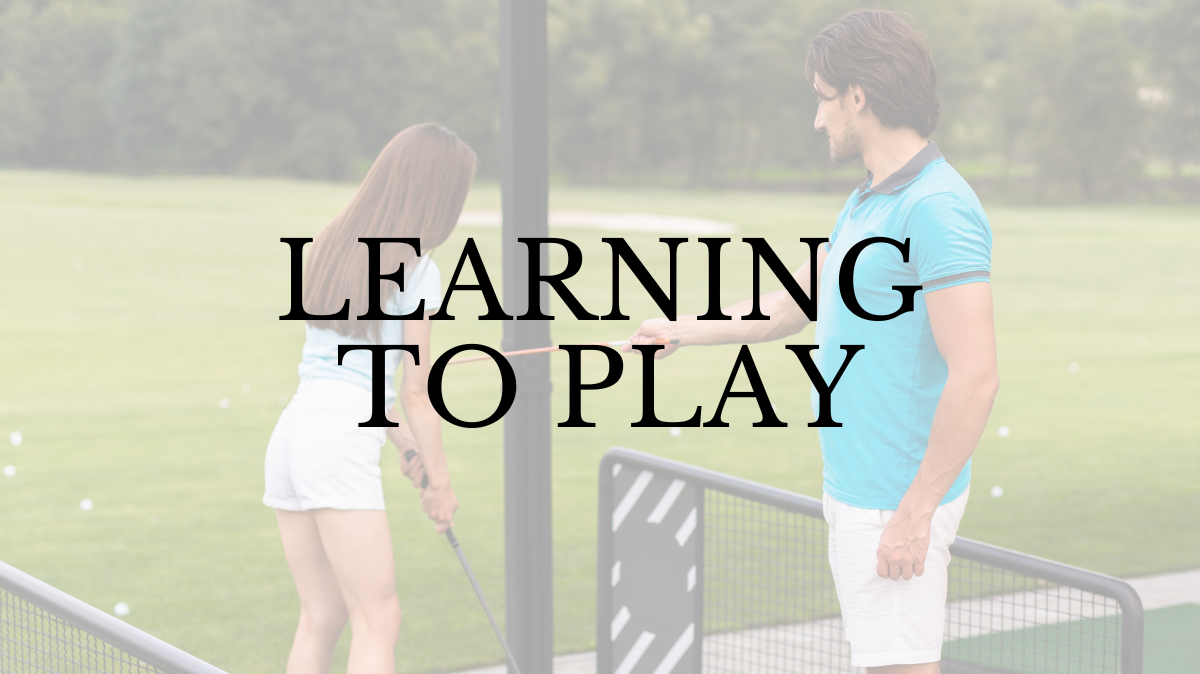The hardest part about golf can be getting started. Ask yourself a few questions. First, why do you want to play? Is it for work or social reasons? Maybe then you need only some basic instruction and patient friends. Perhaps you’re looking to jump in headfirst in hopes of getting better fast. If so, there’s plenty of top-level instruction out there. Next, how much are you willing to put into it? That goes for time and the money. Point is, there’s a huge difference between wanting to ride around and have some laughs and being a serious player. Do some soul-searching, and start to develop your plan. Follow the steps below to start learning today:
1. Take lessons right away: The bad news when you’re just starting out is you don’t know much about golf. The good news? You don’t know much about golf. You probably haven’t ingrained many bad habits, and you have tons of questions about what to do. Nothing beats starting out with some positive direction. And don’t just seek instruction when you’re struggling. It’s just as important to know what you’re doing right as what you’re doing wrong.
2. Have a range routine: Everyone wants to see how far they can hit a golf ball, but when you go to the driving range, resist the temptation to immediately start ripping drivers. Yes, you might crank a couple, but swinging for maximum distance will throw you out of sync — and fast. Start out by hitting one of your wedges or short irons, warming up your golf muscles with half-swings. Then increase the length and speed of your swings, and move on to your middle irons. Work your way up to the driver, and after you hit some balls with it, go back to a short iron or wedge. This will help you keep your tempo and tension level in check.
3. Learn the short shots: Roughly half of your strokes come within 50 yards of the green. That means you probably should spend half of your practice time with your wedges and putter. This might sound boring, but the good news is, you can practice your short game in your own back yard — even in your TV room. Put out some buckets in your yard at various distances and try to pitch balls into them. Give yourself good lies and bad lies, just like you get on the course. As for putting, your carpet might not play as fast as the greens, but you can still practice aiming and rolling balls through doorways and into furniture legs
4. When in doubt, go back to basics: Golf can really get you thinking too much. There’s a lot of information out there, and the most mind-numbing part can be the instruction. When you’re a new golfer, you can’t help but read it and watch it, but too much can be, well, too much. When you find yourself getting burned out from too much swing thinking, go back to basics. Try to get yourself into a good setup — check your ball position and posture — then make a relaxed swing all the way to a full finish. Over-thinking creates tension, so be aware of your stress level: Waggle the club a little at address and try to make a smooth move off the ball.
5. Find the right teacher: Finding an instructor you trust can really speed your improvement. Of course you want your teacher to be knowledgeable and committed to helping you, but just as important is finding a good personality fit. If you’re laid back, you might like a teacher with a low-key approach. If you’re a creative type, you might work best with someone who teaches with feels and images instead of angles and positions. The point is, you want to be comfortable and enjoy the experience. You’ll learn best when you feel free to ask what you think are stupid questions and when you’re not afraid to fall down a few times
Source: Golf Digest


